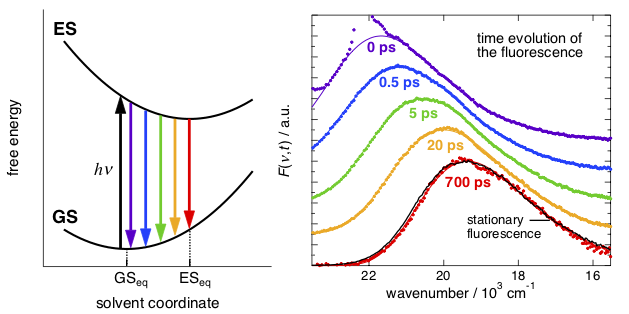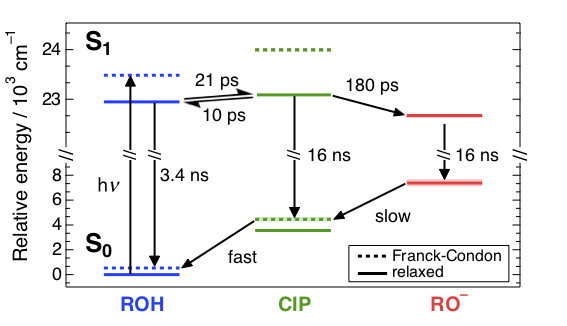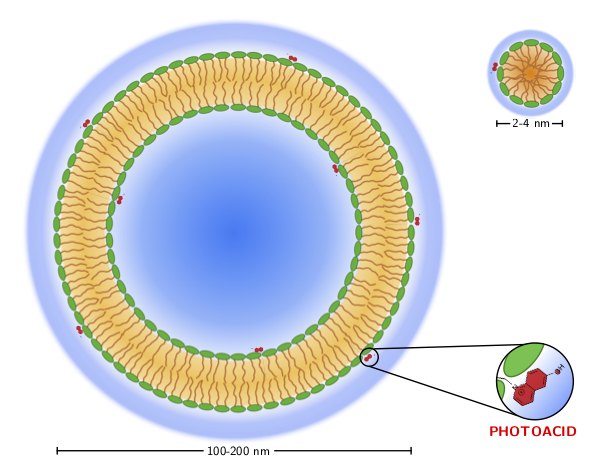Solvation dynamics
Solvation dynamics can have a direct influence on ultrafast photochemical reactions (e.g. excited-state proton transfer) and is therefore of key importance for our research. We utilize femtosecond broadband FLuorescence UP-conversion Spectroscopy (FLUPS) for detailed investigations on solvation dynamics in polar liquids. We are interested in how the chemical structure of solutes and solvents influences the time scale of the solvent relaxation. In addition, we are developing novel methods for the analysis of the broadband fluorescence data. Read more...
Excited-state proton transfer in solutions
Excited-state proton transfer (ESPT) in organic solvents forms the core of our research interests. We utilize a large range of optical spectroscopic methods for detailed investigations on the mechanism and dynamics of ESPT reactions. Our work relies on “super” photoacids, acids that have negative excited-state acidities and are able to deprotonate in several organic solvents. Our research questions are focused on the influence of solvation dynamics as well as macroscopic solvent parameters (e.g. dielectric constant, acidity, viscosity etc.) on ESPT to solvent and organic bases. Read more...
PROTON TRANSFER at biological interfaces
Our last research topic is focused on developing more direct methods to investigate proton transfer and acidity of biologically relevant interfaces. The research relies on specially designed photoacids that have a high affinity towards interfaces between hydrophobic and hydrophilic media. Due to the thorough understanding of the influence of the environment on ESPT, the properties of the interface-bound photoacids are expected to directly report on the local environment at interfaces. In our investigations, we utilize an interface-specific technique, Surface Second Harmonic Generation, as well as more conventional spectroscopic techniques. Read more...



